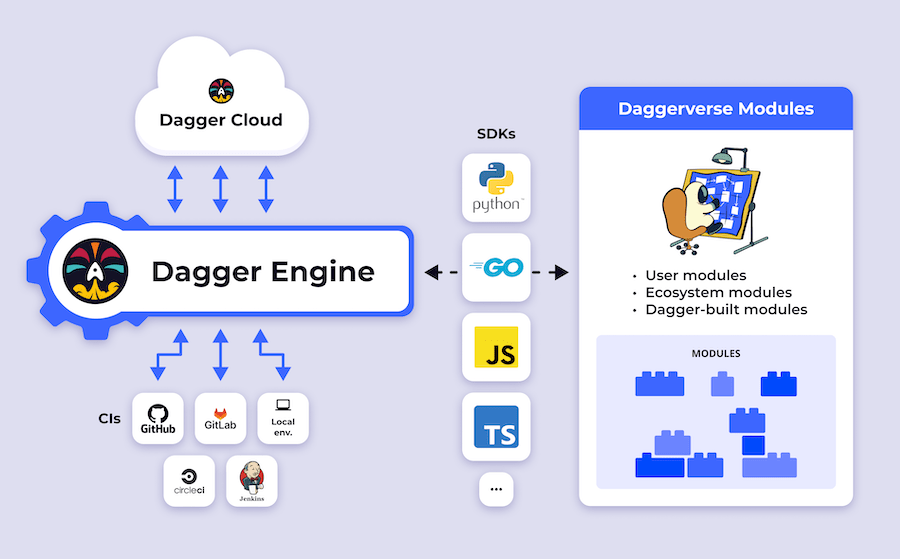This repo shows how to use Dagger in both go and node to build a simple websocket node application, written in TypeScript with Express.
- Your program imports the Dagger SDK in your language of choice.
- Using the SDK, your program opens a new session to a Dagger Engine: either by connecting to an existing engine, or by provisioning one on-the-fly.
- Using the SDK, your program prepares API requests describing pipelines to run, then sends them to the engine. The wire protocol used to communicate with the engine is private and not yet documented, but this will change in the future. For now, the SDK is the only documented API available to your program.
- When the engine receives an API request, it computes a Directed Acyclic Graph (DAG) of low-level operations required to compute the result, and starts processing operations concurrently.
- When all operations in the pipeline have been resolved, the engine sends the pipeline result back to your program.
- Your program may use the pipeline's result as input to new pipelines.
The Dagger Engine can be run in any CI and can easily run on local machine for easy testing before pushing.

The setup runs the 2 pipelines in the folder ci:
- A Dagger pipeline written in GoLang with 3 stages:
- Test stage
- Build Stage
- Docker Publish stage
- A Dagger pipeline written in node with 3 stages:
- Test stage
- Build Stage
- Docker Publish stage
Both of the pipelines are run when pushing to main branch as theres to workflows in the .github folder:
They both install dagger sdk and dagger cli to run the corrosponding pipeline.
This shows that the Dagger can run anywhere as long as docker is present.
- Open the repositories devcontainer in Visual Studio Code.
- Run
dagger run go run ci/main.gofor the go pipeline - Run
dagger run node ci/index.mjsfor the node pipeline
